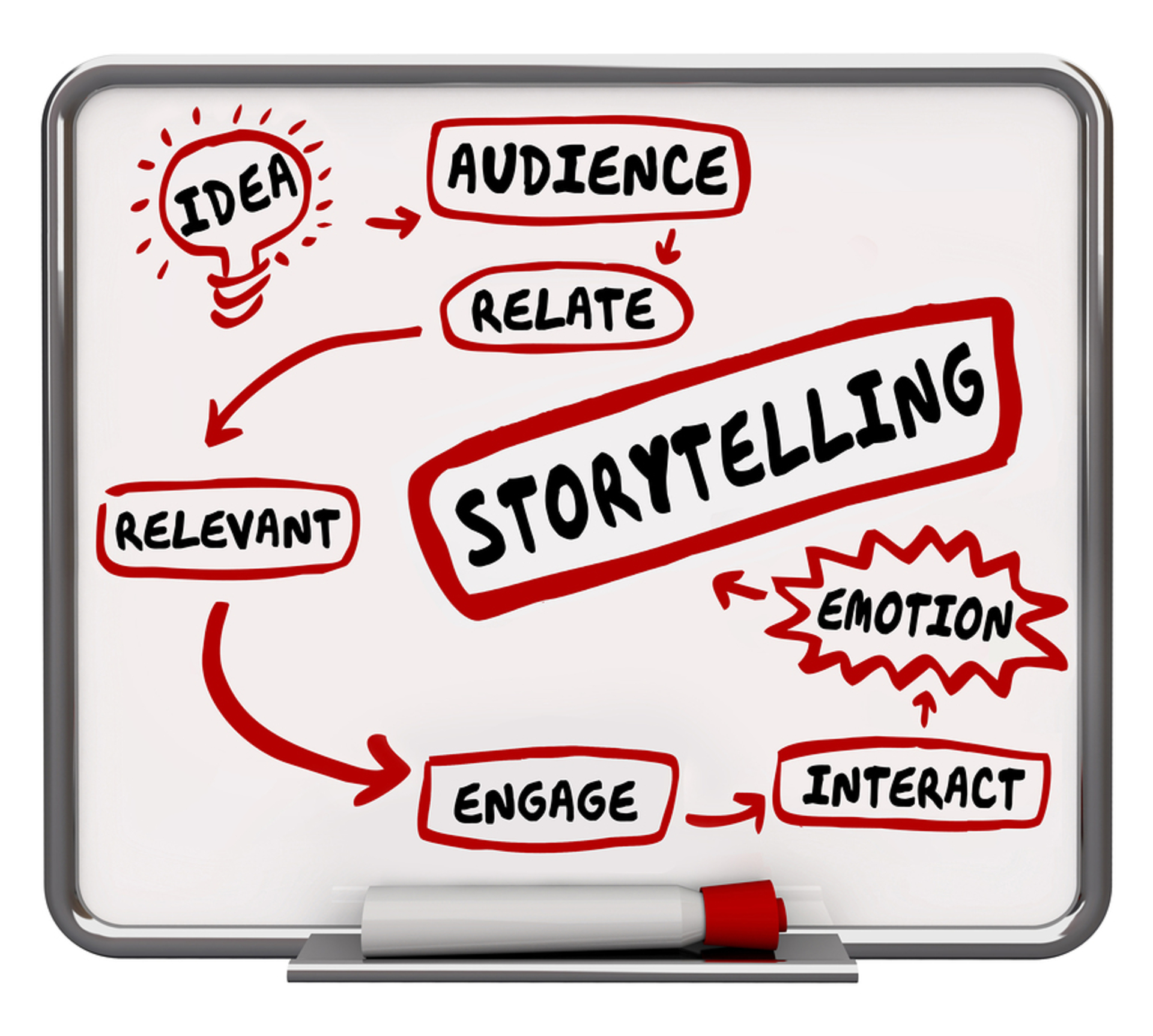< Back to all posts
Why Authentic Storytelling Matters to Your Business
As the story goes, eBay founder Pierre Omidyar built the now-ubiquitous e-commerce website to give his fiancé a way to increase her Pez dispenser collection by trading them with other like-minded collectors.
There’s only one problem here: that story is completely false.
According to one of the first eBay employees, Omidyar concocted the tale because “Nobody wants to hear about a thirty-year-old genius who wanted to create a perfect market.”
What’s the moral of this story about a fake story? Here it is: when telling a story about a company, the story must be not only interesting but also authentic. This is especially true when it comes to storytelling in your corporate video content.

The Science Behind Storytelling
Why is storytelling so important? In a word: science.
Researchers have observed the power of storytelling in the human brain. When one person tells a story to another, their brains “synchronize”—or experience the same neural activity at the same time. Scientists call this process neural coupling.
And when neural coupling occurs between two (or more) people, each of them experiences heightened levels of understanding, comprehension, and receptivity. Also, storytelling impacts the emotion-processing parts of the brain, which is why many people “feel” stories on a deeper level.
What Storytelling Isn’t
These increased levels of engagement won’t take place if storytelling isn’t done properly. Many companies tend to confuse storytelling with the recitation of mission statements, facts and figures, corporate sales pitches, or brand equity statements.
Perhaps the most common storytelling mistake is trying to formulate a story around a list of goals, accomplishments, or attributes. Even though a list has a progression as a story does, there is little to no emotional connection that can be established with the listener or viewer. In other words, you’ll never hear a potential customer say, “Oh boy! I’m on pins and needles waiting to hear what this company’s fourth pillar of success is!”
No to Selling, Yes to Personality
The takeaway? Don’t try to sell your company, product, or service while telling a story. You won’t be fooling anyone, and those who are listening (especially millennials) may get turned off by what they see as a clumsy sales pitch being poorly disguised as an actual story.
Instead, start by injecting a little personality into the story you’re trying to tell. After all, the best stories tend to be presented using a non-monotonous delivery. At the very least, tell your story in a conversational style instead of using verbiage that would seem more at home in a corporate earnings report. And if your brand or your company founder has a unique “voice,” make sure that comes out in your storytelling.

The Building Blocks of a Story
When crafting a story for your corporate video, it’s essential to frame it in a way that people are familiar with. You may have heard about the five parts of a story’s dramatic structure: exposition, rising action, climax, falling action, and resolution. A more succinct progression may consist of a problem, the solution, and success.
While either of these structures can be the foundation of an effective story, in both cases it helps to keep it as simple as possible when making a corporate video. If you try to create a Harry Potter-like story or an Inception-level narrative, chances are you’ll lose the attention of your viewers.
How to Find the Perfect Story
A common storytelling approach that companies embrace is the revelation of their origin stories (the real ones, not bogus narratives like with eBay). Think about all the brands whose origin stories are a big part of their image: Apple’s founders creating their company in a garage, or Oprah Winfrey’s rise from an underprivileged childhood to the pinnacle of the media world.
Another frequently-employed storytelling device in corporate videos is the use of customer stories. A good testimonial lays out the problem that the customer was facing and then details precisely how the company worked to solve it. These types of narratives are easy for consumers to identify with because they have probably told similar stories to their friends, colleagues, and peers.
It’s also smart to ask employees at the company what types of customer issues they deal with and resolve on a daily basis. These interactions are key to understanding how current customers view the company and its brand, and also to learn what their expectations are for the company and whether their needs are being met. After all, you don’t want to waste money trying to speak to customers about topics that they care very little about.
One more thing: don’t assume that other people will not want to hear about the knowledge that has been accumulated by the company and its leaders. It’s human nature to believe that your skill set and your experience may sound boring to those who don’t work in your industry, or that the information is simply “common knowledge” when it is anything but. Finding this angle and illuminating it for your audience will help you connect with them—especially if they’re learning something that they didn’t know.
A Word About Nonprofit Storytelling
Finally, it’s worth emphasizing that storytelling in a corporate video is just as vital for nonprofit entities as it is for conventional companies. Too many nonprofits have simply described their goals on camera and/or showed the recipients of charity funds without trying to build a story around those elements.
As with traditional corporate videos, it’s counterproductive to rely on statistics, mission statements, or donation pitches instead of crafting an actual narrative. Also, it’s important to identify the particular type of donor audience you’re trying to reach (Wealthy individuals? Families? Corporations?) and articulate the level of impact that their donations have had and will have on the beneficiaries of the organization.
Conversely, some nonprofits assemble an appealing, emotionally-powerful story in their corporate videos, but then neglect to provide a clear call to action. Whereas the message of private sector corporate videos is to purchase a product, engage a service, or partner with a company, viewers of a nonprofit’s video need to be given clear steps concerning what to donate and how to go about making a donation.

Find Professional Video Producers
If you still need some extra assistance in formulating a story for your corporate video, partnering with an experienced video production company is a smart move. These companies have the knowledge and expertise in fleshing out the most relatable and informative aspects of your company, and then building a narrative that will capture viewers’ attention, engage them on an emotional level, and persuade them to patronize your company. Remember: Consumers are much more likely to remember and embrace a company if they can relate to the story behind it.
Need some help finding a professional video crew in your area? Contact us today!







Leave a Reply